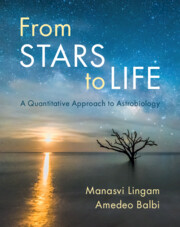12 - Detecting and Characterising Exoplanets
from Part IV - Astrobiological Targets
Published online by Cambridge University Press: 22 November 2024
Summary
Ever since the first exoplanets were discovered over 30 years ago, their detection has proceeded at a remarkable pace. This chapter describes the techniques for identifying these worlds, as well as characterising their atmospheres and surfaces to seek out possible signs of life. The most common methods for detecting exoplanets are reviewed: radial velocity measurements, transits, gravitational microlensing, astrometry, and direct imaging. This is followed by summarising avenues for characterising exoplanets through performing spectroscopy of three sources of radiation linked to them: (1) transmitted light passing through an exoplanetary atmosphere and reaching us; (2) thermal emission associated with the blackbody radiation of the planet; and (3) starlight reflected from that world. The chapter concludes by commenting on the bright future of exoplanetary science and future telescopes devoted to this area.
Keywords
- Type
- Chapter
- Information
- From Stars to LifeA Quantitative Approach to Astrobiology, pp. 266 - 290Publisher: Cambridge University PressPrint publication year: 2024

